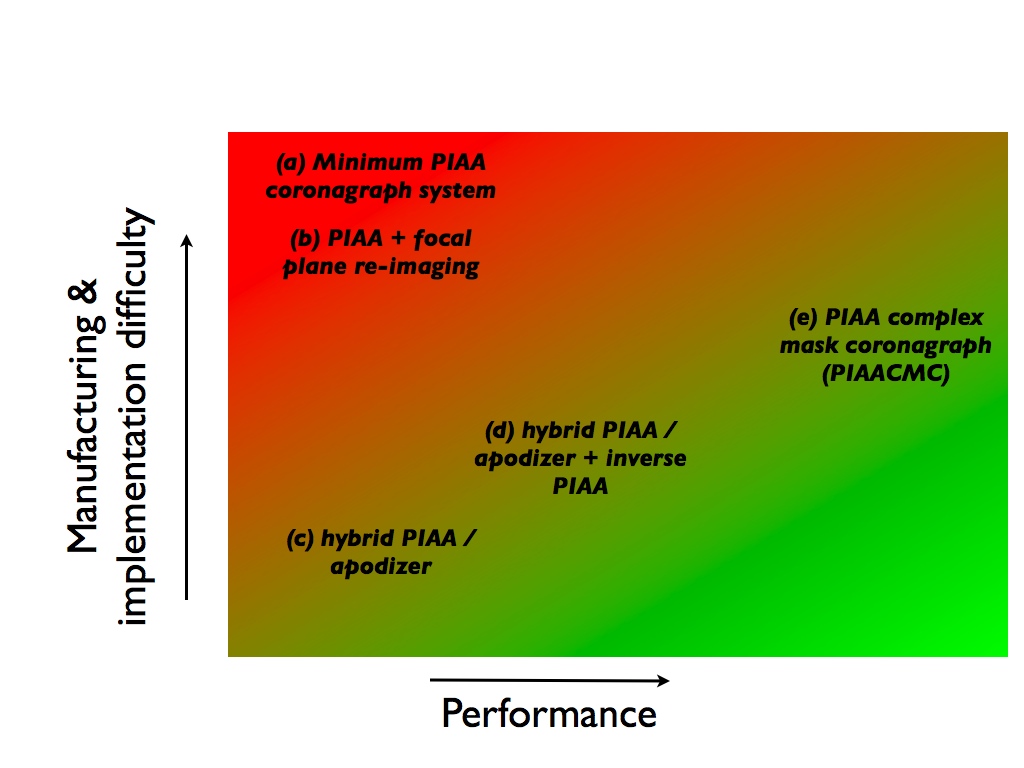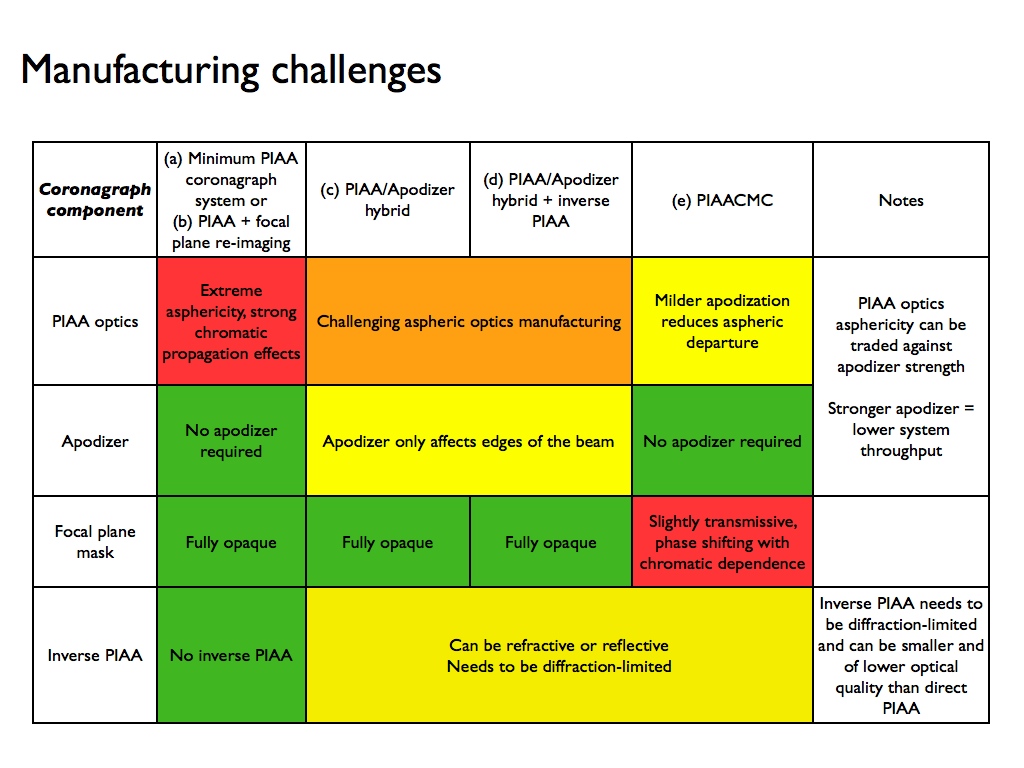
 |
Figure 2: Five possible PIAA coronagraph architectures, approximately ordered from top to bottom in increasing performance and manufacturing ease. |
 |
Figure 3: Approximate location of the five architectures shown in Figure 2 on a 2-D plane with performance (x axis) and degree of technical difficulty (y axis) coordinates. |
 |
Figure 4: For each of the four architectures, manufacturing challenges are different, as shown in this table. |
| δφ(r,θ)/δr = α A(r) cos(θ-θ0). | (equ 1) |
|---|